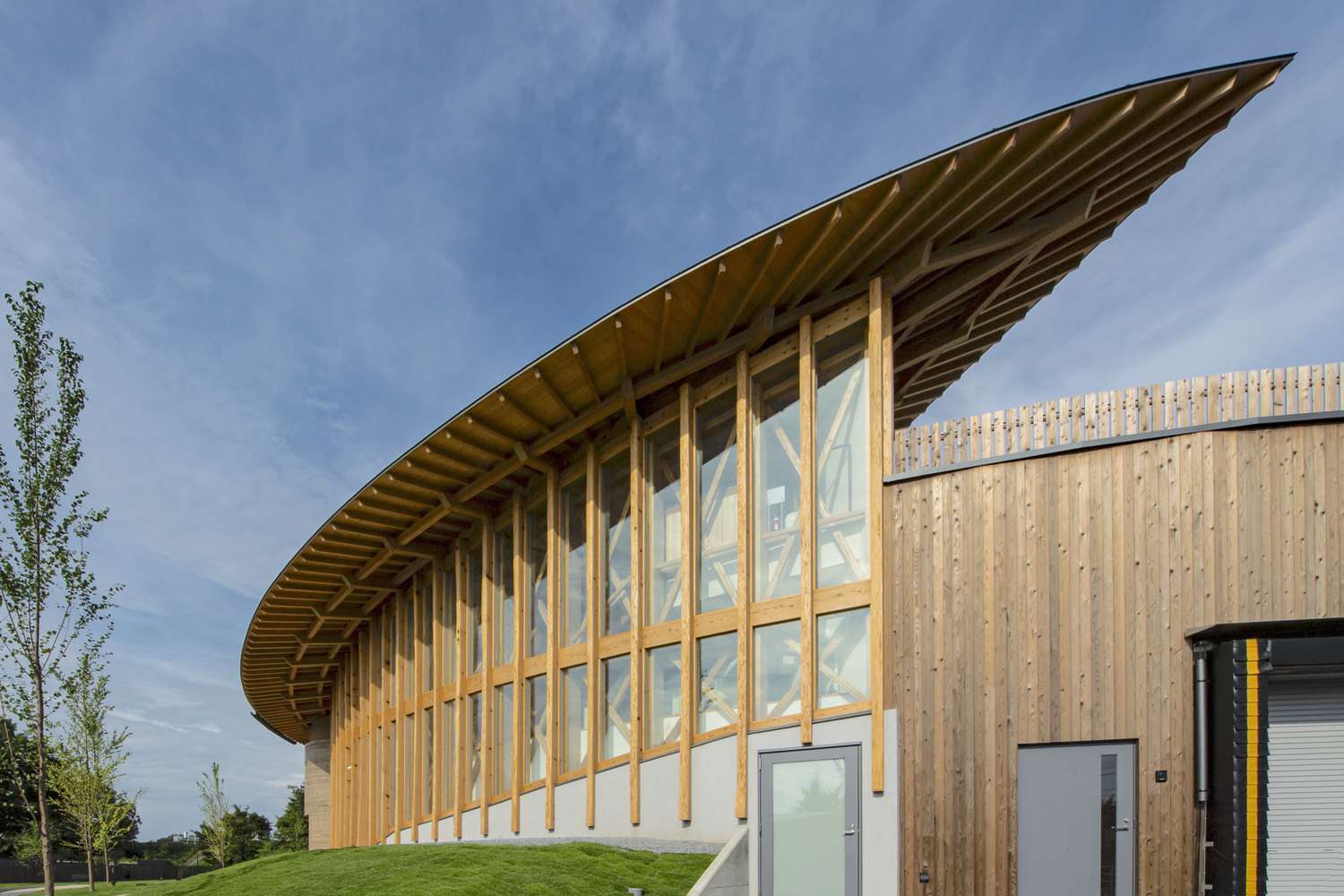When it comes to using locally sourced materials to build in a more sustainable way, nothing is more environmentally friendly than using the soil right under one’s feet. Building with earth has been around for millennia and comes in a wide variety of techniques that differ depending on climate and type of soil available—from the simplest dug-out to more innovative implementations like superadobe earthbag installations, AirCrete domes, and cutting-edge 3D printed earthen projects.
Over in Japan, we see a graceful combination of rammed earth and wood in this recently completed project by Tokyo-based firm Tono Mirai Architects. Seen here previously for their serene retreat dubbed Shell House, Mirai has achieved yet another beautiful project with rammed earth, this time on a larger scale.
Takeshi Noguchi
The firm’s Oyaki Farm project is located just outside the city of Nagano and comprises a cafe, a store, and various spaces to produce a local culinary specialty called oyaki.
Takeshi Noguchi
There’s a lot of history behind the humble oyaki, which is essentially a dumpling made with wheat or buckwheat flour, stuffed with seasoned vegetables like eggplant, mushroom or pickles, or some form of protein, and then baked or grilled. It’s known as one of the region’s comfort foods and dates back to the ancient Jomon period of prehistoric times (14,500 to 300 BCE). As Food In Japan explains, the emergence of oyaki is closely tied to the traditions and agricultural character of the region:
“Traditionally families would sit around an open griddle and eat together on a cold snowy night. [..] Nagano prefecture’s steep mountains and cold climate made rice cultivation difficult and produced poor yields in pre-industrial Japan. Farmers in Nagano turned to buckwheat or soba instead. This flour was then mixed with water and filled with local wild vegetables and often seasoned with soy sauce and salt and hence we get oyaki, steamed dumplings, or steamed buns if you will.”
Like its namesake, the project takes on a rounded form, derived from two circles that represent the interlocking relationships between this oyaki “factory” and the landscape, as well as the dialogue between the cafe and the larger community in which it sits.
The architects explain that the arc of the roof echoes the mountains in the distance, with the roof beams being meticulously hand-chiseled by local craftspeople. Both of the end corners of the curved roof employ a traditional configuration of rafters that fan out, creating a dramatic roofline that mediates between earth and sky.
Takeshi Noguchi
The design strategy was to evoke “memories of the earth” and the genius loci, or the “spirit of place,” as well as to emphasize local natural materials and honor traditional Japanese building techniques. The goal was to “uplift” the site with a design that is simultaneously rooted to nature and to facilitate movement, change, growth and circulation within. As the firm says:
“[T]his architecture also aims to be a place where ‘the architecture that was born and returns to the earth’ over a long time axis of tens of thousands of years—using lumber produced in the prefecture and surplus soil from construction sites.”
Takeshi Noguchi
Under the sweeping arc of the metal roof made with galvalume panels, we have interior spaces on the ground floor that are open to the public. There are these gorgeous halls that are supported by 23-foot-tall (7-meter) drum pillars, that are then covered with wood panels. Much of the project’s wooden materials are cedar and cypress, sourced locally from the nearby village of Nebamura.
Takeshi Noguchi
To remind visitors of its intimate connection with the land, the round entrance hall is made with rammed earth, using soil that comes directly from the site.
Takeshi Noguchi
The main hall is conceived as an “experience space” where visitors can enjoy oyaki made on-site, as well as appreciate the wooden architecture and the carefully framed views of the exterior landscape.
Takeshi Noguchi
Up the staircase and back outside, we come to the “sky deck,” which offers visitors broad views out to the serene landscape beyond, while they sit and eat an oyaki. This part of the scheme offers what the Japanese would call shakkei, or “borrowed scenery,” wherein some distant view of nature is incorporated into the design of one’s garden or home.
Takeshi Noguchi
As Okayi Farm shows, earth architecture is proving to be as versatile as it was thousands of years ago, and it’s still as relevant as ever as our buildings continue to evolve—hopefully in harmony with nature, and with a delicious regional dish to go with the view. To see more, visit Tono Mirai Architects.
